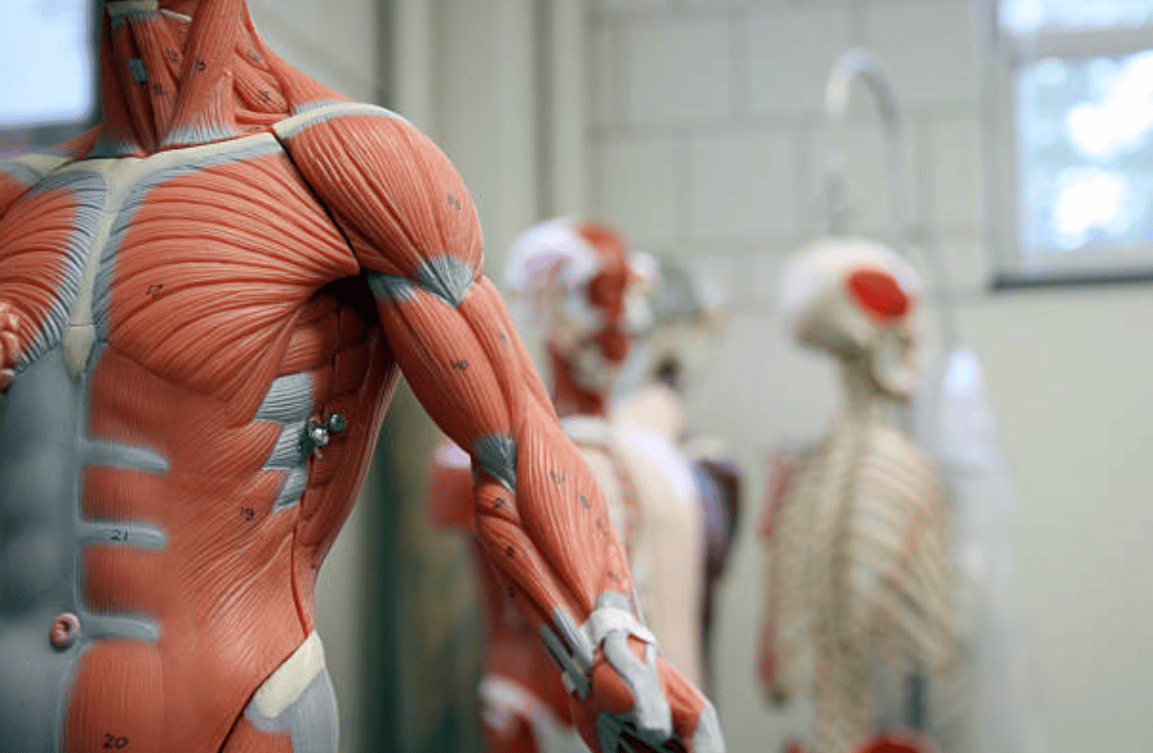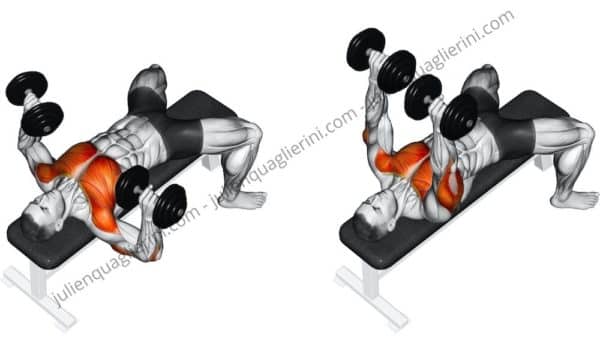Dumbbell bench press is an exercise that allows a more natural movement than the bench press. Also called the Dumbbell bench press by our American friends, it is more difficult to perform because of the instability of the dumbbells. It calls indeed upon other stabilizing muscles and requires a certain control and balance. Therefore, you can't put as much weight as for a free bar exercise. The muscles solicited at the time of the execution of this exercise are the great and the small pectoral but other muscles come into play like the triceps and the anterior deltoids as well as the stabilizing muscles like the serrated ones in particular. You will have understood it, this exercise is thus made to muster in priority your pectoral muscles.
How do I perform the exercise?
Start by adjusting your weight bench by laying it flat.
For more ease, if the configuration of the room allows it, position the bench facing the chosen dumbbells. If not, roll the dumbbells up to you so you don't injure yourself by carrying them incorrectly. Grab the dumbbells in a grip pronation and put them on your knees and then tip over backwards to lie on a flat bench.
The back must be well plated with the back of the bench and the feet well flat on the ground and enough spread out for more stability. Take a deep breath and stretch your arms over your chest as you push the dumbbells in a converging motion, contracting your pectorals strongly. As you push the dumbbells out, you will exhale the air you had. Then lower the dumbbells on either side of your chest slowly, opening your rib cage and repeat until you finish your set and return to your starting position.
which muscles are involved in the dumbbell bench press?
This dumbbell bench press mainly muscles the pectoral muscles and more precisely the pectoralis major and minor. Then, this exercise of body-building will also solicit the deltoids, the shoulders as well as the triceps.
Tips for the bench press
- After having done your warm-up, you can start this basic exercise by using very light dumbbells. At least until you have completely mastered the movement, especially in terms of stability. The help of a training partner is strongly recommended when you are a beginner or when you are using heavy weights (which is not recommended nor necessary).
- Avoid going too low on the descent, especially if you have long arms, to avoid injury.
- Try to keep your back flat against the bench to avoid over arching. You can also place your feet on the steps to reduce the arching of your back or bring your knees up against your stomach, but this position is very unstable and requires you to reduce the load.
- Don't go too low so as not to stress your shoulder joints too much, especially if you have long arms.
- Try not to let the dumbbells touch each other at the end of the movement as this makes the exercise less effective by decreasing the time under tension of the movement.
- In heavy work, the most dangerous is not the movement in itself but especially at the time of the catch of your dumbbells on the rack before putting you in position on the bench and when you raise you. This is why it is essential (if you can) to position the bench in front of the dumbbells that you are going to choose then to seize the dumbbells while being well in front, the right back then to pose them on your knees and rock on the bench.
- At the end of the set, rest the dumbbells on your knees again and stand up using the counterweight. This will prevent your back from suffering from any bad movement.
- Always keep your buttocks glued to the bench during the exercise.
Variations of the dumbbell bench press
- The dumbbell bench press can be replaced by the barbell bench press which requires less stability but allows to put more weight. On the other hand the stretching and the contraction of the pectoral muscles will be less important.
- One can also vary the position of the hands: In neutral grip one will be able to contract more and work the pectoral muscles at the end of the movement but the work will be more carried on the triceps and the anterior deltoids.
- Other variations: inclined or declined developed with the dumbbells or the bar, or the use of convergent machines Technogym or Hammer in particular.
Need a complete program?
Additional articles :





